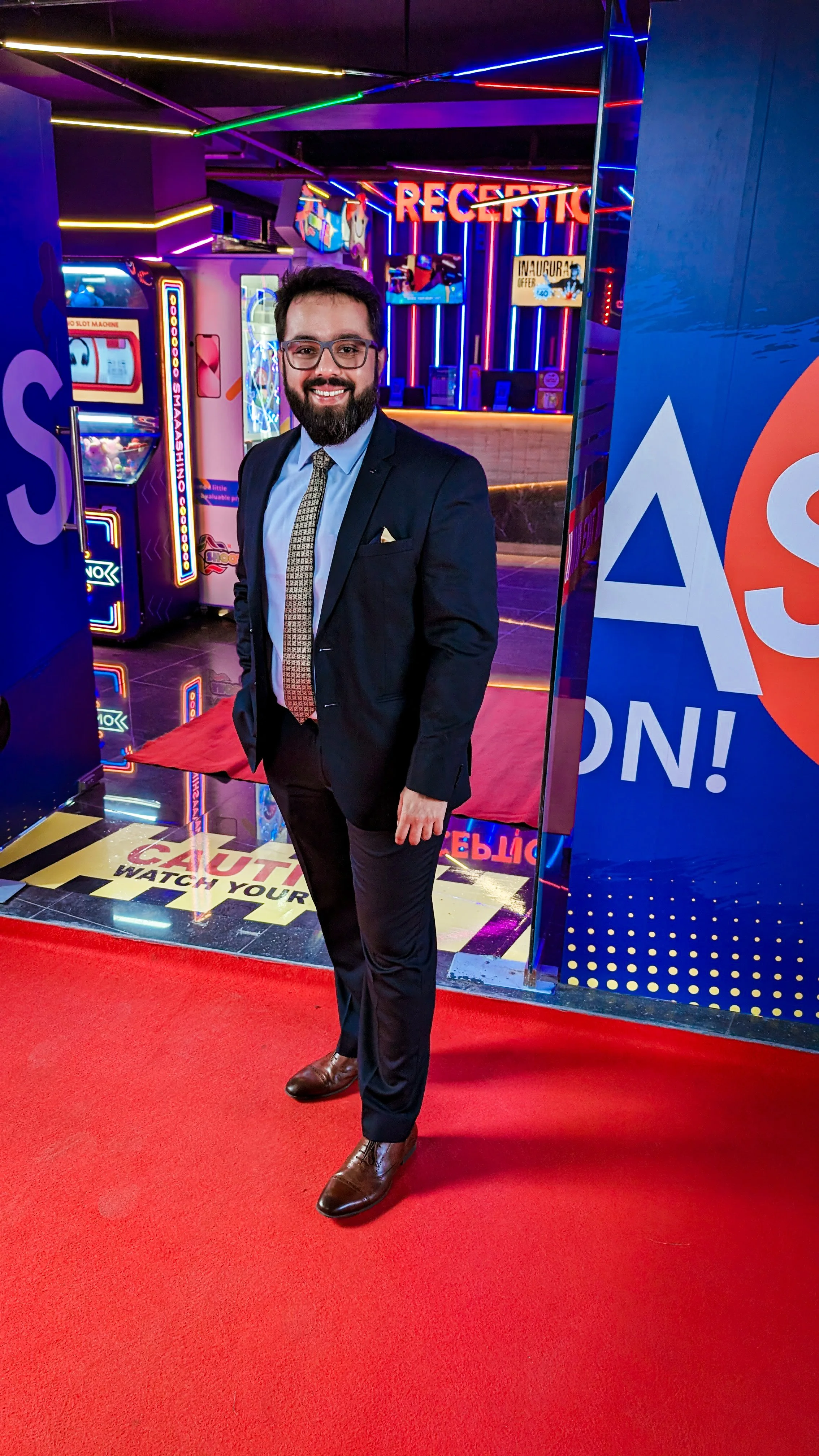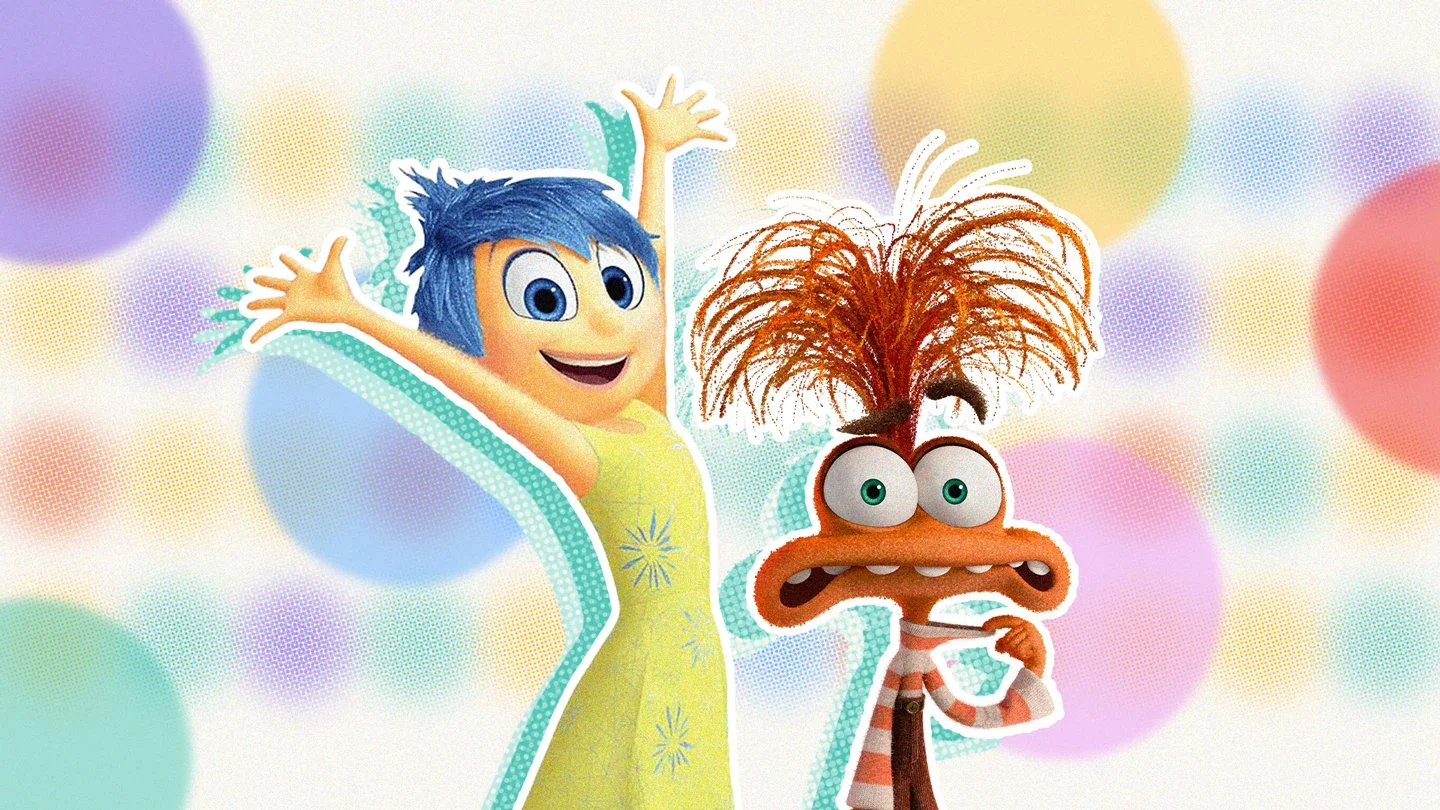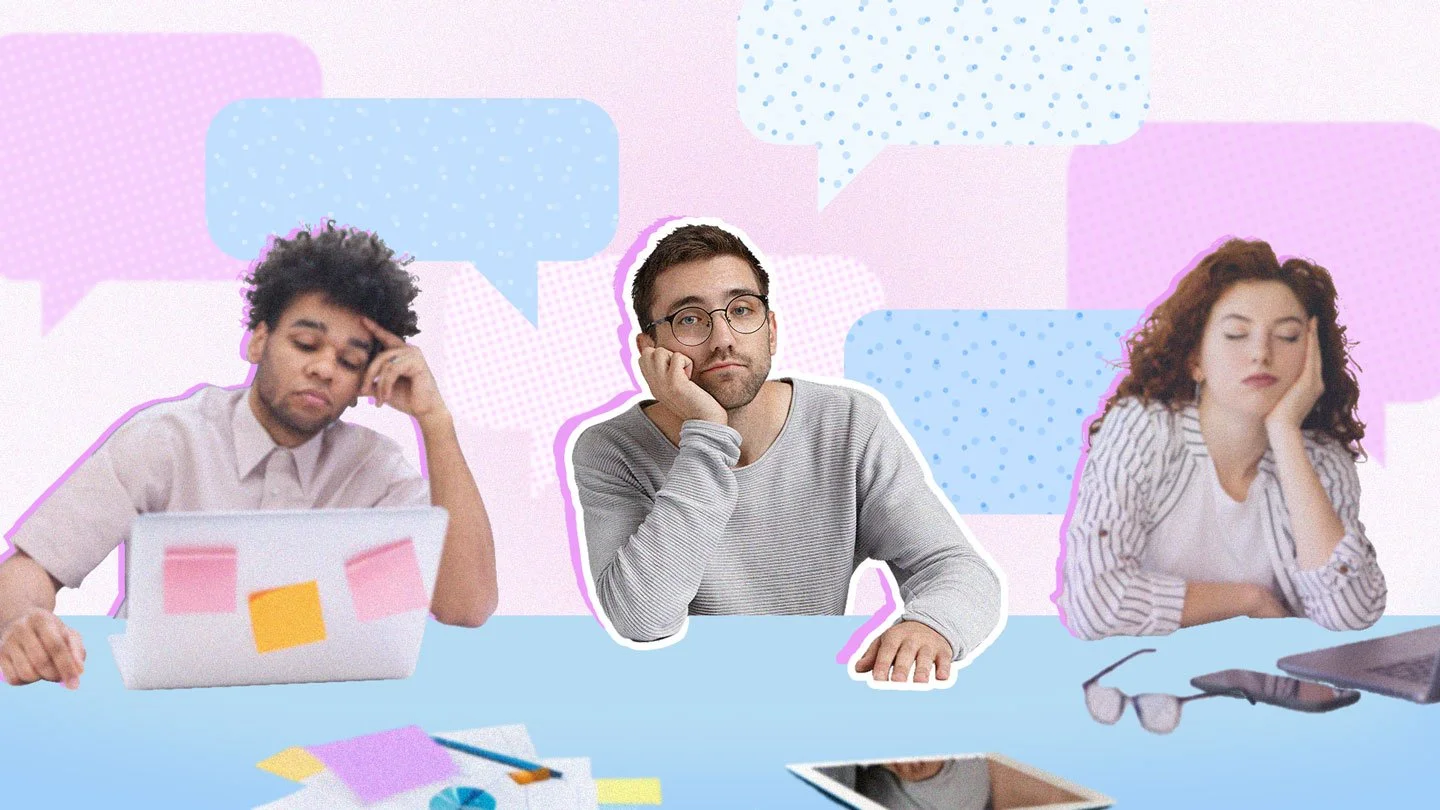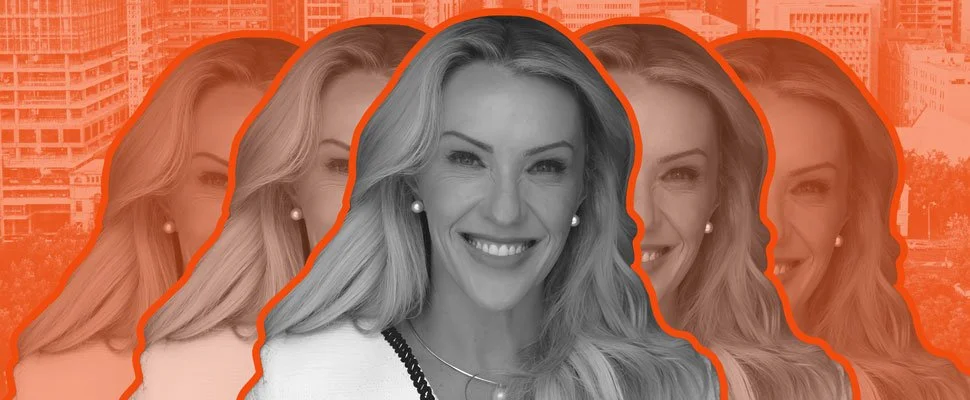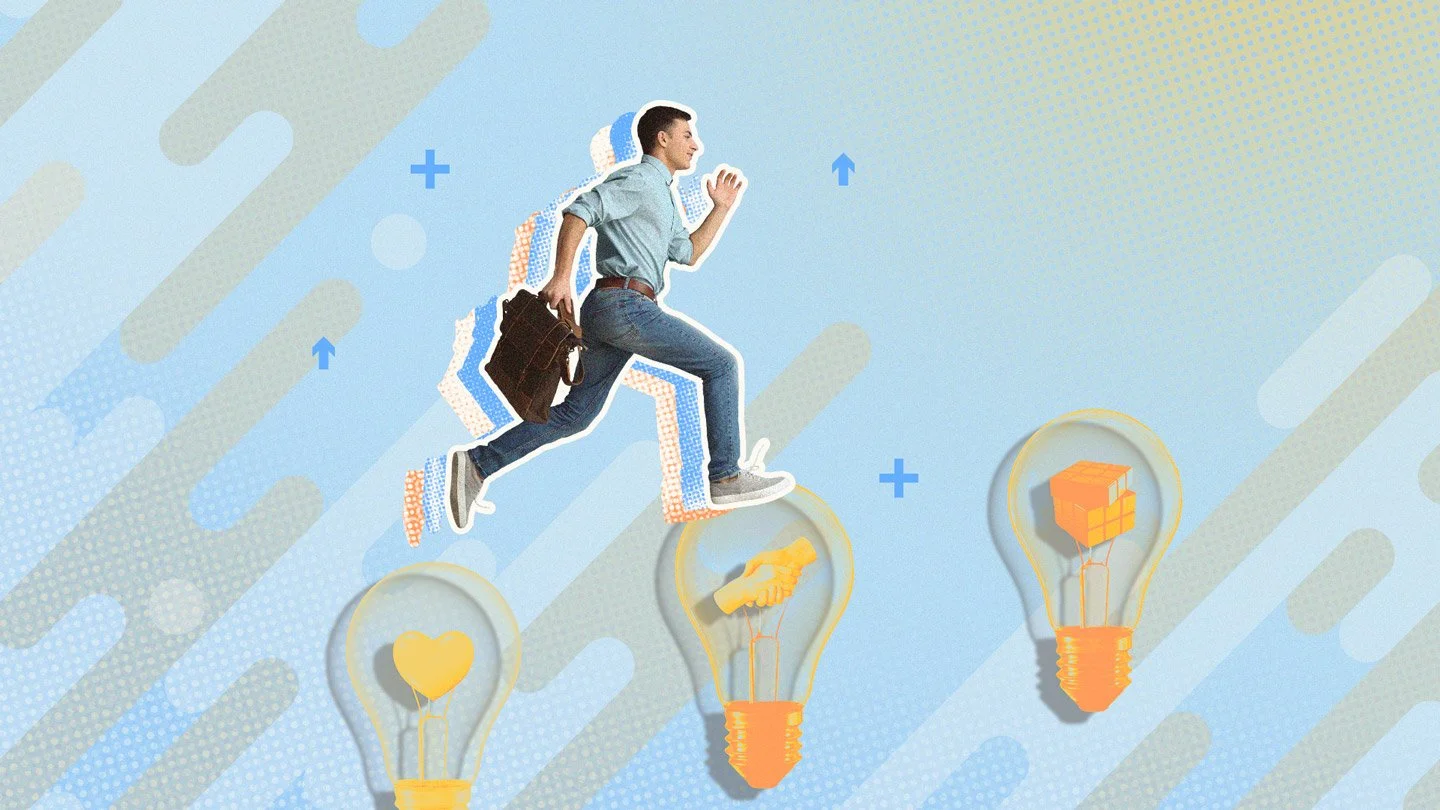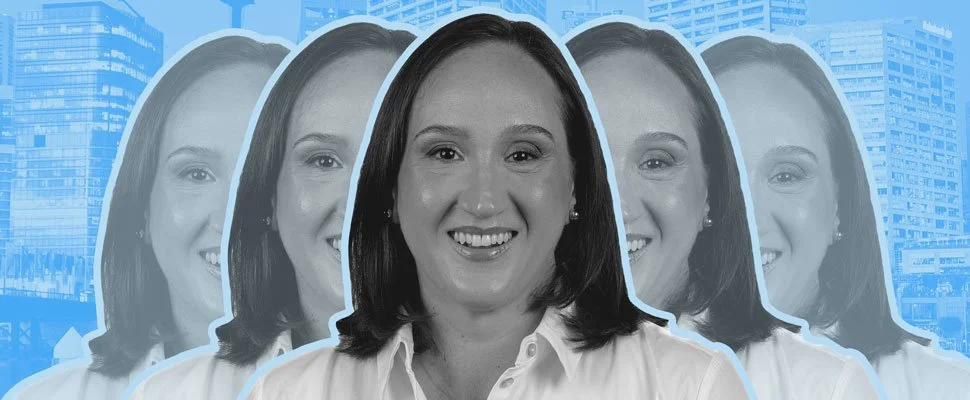Human on the Inside with Avanish Agarwal
Human on the Inside. We’re big believers in the power of human skills. But don’t just take our word for it - the evidence for excellence powered by human (‘soft’) skills is everywhere! In this engaging, ever-enlightening series, we speak with industry leaders, innovators and game-changers to learn a little about their personal career journeys, and how human-led strategies, philosophies and cultures are proving a force for good in their working worlds …
Maxme: Welcome Avanish, and thanks for stepping into the #SuccessIsHuman Spotlight!
You’re currently the Head of Strategy for Anvis Digital, a Pan-India Creative & Digital Marketing Agency; and founder of the foodie channel Bombay Food Diary.
In 1 sentence (ok, we’ll give you 3), what does this role entail?
Avanish Agarwal: I spearhead cross-functional pods of strategists, creatives and data scientists to decode culture at speed, surface white-space opportunities and architect omni-channel growth blueprints that turn deep human insight into measurable commercial advantage. Day to day that means running war-room discovery workshops, mining behavioural data for opportunity signals, then road-mapping everything from brand narratives and full-funnel media mixes to KPI dashboards and automation workflows—while coaching the team to think two moves ahead. And because I moonlight as the creator of Bombay Food Diary, I stay relentlessly plugged into real-world consumer sentiment, pressure-testing content in the wild and cycling that “street-level” empathy straight back into the boardroom—proving that #SuccessIsHuman, after all.
M: Whilst you’ve had Bombay Food Diary for over 10 years, you’ve just joined Anvis Digital 6 months ago. After over a decade in marketing — across food tech, F&B, and 5+ years on the client side — you’ve transitioned to the agency side with one goal: to build what hasn’t been built yet.
What does this mean to you, how does all this work speak to your personal purpose and what drives you as an individual?
AA: “Build what hasn’t been built yet” is my North Star shorthand for refusing to recycle yesterday’s playbooks. It means hunting for the white space where consumer behaviour, emerging tech, and cultural Zeitgeist intersect—and then architecting brand systems that make that intersection commercially scalable.
At a personal-purpose level, the work ladders back to three convictions:
Human empathy is the ultimate unfair advantage. Ten years of Bombay Food Diary taught me that when you sit across the table from real people—tasting what they taste, feeling what they feel—you spot unmet needs long before a spreadsheet does. Translating that street-level empathy into boardroom strategy lets me craft solutions that are useful before they’re merely “innovative.”
Creativity deserves a balance sheet. I’m driven to prove that brave ideas, when engineered with data discipline, outperform safe ones. Whether it’s launching a zero-to-one product in food tech or rebuilding a heritage F&B brand’s demand engine, I’m motivated by turning imagination into repeatable revenue.
Talent is the multiplier. Moving agency-side lets me mentor multidisciplinary pods—planners, designers, analysts—and build a culture where soft skills (listening, storytelling, resilience) are treated as hard KPIs. When people feel seen and psychologically safe, they ship work the market hasn’t even thought to want yet.
So what drives me? A builder’s restlessness, a foodie’s curiosity, and a strategist’s obsession with making every human insight pay dividends—for consumers, clients, and the teams who craft the magic.
M: Tell us a little about your personal education pathway/s - what led you to where you are now? How closely do your formal qualifications match your current career?
AA: I like to say my CV reads more like a tasting menu than a linear syllabus—each course layering new flavours onto the next.
Hospitality Foundations.
I began with a Bachelor’s in Hotel Management, which hard-wired the service mindset and operational discipline that still anchor my leadership style. A student-exchange stint in Germany dropped me behind the bar, where I learned the alchemy of reading a guest’s mood in micro-seconds and crafting an experience on the fly—human insight in its rawest form.
Global Food-&-Beverage Lens.
Noting the pay-scale gap back home, I up-skilled with a Food & Beverage Management diploma at George Brown College, Toronto. Working in Canada’s hyper-competitive restaurant scene taught me to marry culinary creativity with P&L accountability, and to think in systems—not silos.
Pivot to Food-Tech & Marketing.
Back in India, I could see food-tech’s inflection curve approaching, so I jumped from hotel ops to a product team, translating kitchen pain-points into scalable tech features. Mid-career, a role at Times Internet under mentor Vivek Kapoor reframed my worldview: marketing done well is simply hospitality at scale—empathy, storytelling and timely utility delivered through pixels instead of plates.
Strategic & Systems Thinking.
Lockdown downtime became uptime: I completed a Bachelor’s in Management Studies, formalising my grasp of finance, org design and data-driven decisioning. I stress-tested those skills running growth for Smaaash’s family-entertainment centres—where footfall, CX, and revenue per square foot are a daily stress test of strategy meeting reality.
Agency Leadership.
All roads converged six months ago at Anvis Digital. Today, I orchestrate multidisciplinary pods that blend the service DNA of hospitality, the product rigour of food-tech, and the narrative craft of media to build brand systems nobody’s built yet.
Fit to Function.
Do my formal qualifications “match” my role? Tactically, perhaps only 30 percent. Strategically, they’re a 100 percent match: every certificate, bar shift and balance sheet drilled the same core truth—understand human needs first, design systems around them second, and commercial results follow. That philosophy is exactly what my clients buy today.
M: If you could share one piece of career advice to your 21 year old self it would be ...
AA: Treat every role as a live-fire prototype lab: chase problems, not job titles; double down on the combo of street-level empathy and systems thinking; and ship imperfect versions early so real-world feedback compounds your growth faster than any polished résumé ever will.
M: Maximising the potential of individuals, communities and businesses through the power of human skills is the reason Maxme exists. Can you tell us a little about the role and / or value of human skills in your workplace right now?
AA: At Anvis Digital, human skills aren’t the “soft” layer that cushions the real work —they are the work. Here’s how they create enterprise-grade value on the ground today:
Empathy as a data-source.
Before a single trend-deck is built, we run “bar-stool interviews” (a nod to my bartender roots) where planners listen—no laptops, no note-taking—to customers recount moments of delight or friction. Those stories get coded into our insight model alongside first-party data, giving us a fuller signal than surveys alone ever could. Result: campaign concepts hit a 35 % higher first-round approval because they start with lived experience, not assumptions.Radical listening in cross-functional war rooms.
We assemble sprint pods of strategists, copywriters, media traders and clients for 90-minute “strategy scrums.” The rule: business cards come off the table, curiosity stays on it. Active-listening drills and “yes-and” ideation loops cut hierarchies and surface edge-case ideas that have added ₹22 crore in incremental pipeline for one F&B client this quarter.Storytelling as an internal OS.
Decks travel, narratives stick. Every brief, KPI dashboard and post-mortem is wrapped in a three-act story arc so even non-marketers understand the ‘why’, not just the ‘what’. That shared mental model slashes revision cycles by 18 % and keeps creative, media and analytics running on the same emotional fuel.Psychological safety as a productivity lever.
We metricise “un-bossing” behaviours—simple rituals like junior-first feedback rounds and ‘mistake retros’ where leaders own a flop upfront. Team survey scores on psychological safety jumped from 6.8 to 8.9 in six months, correlating with a 27 % uptick in proactive idea submissions.Adaptability as market insurance.
Quarterly “skill-sprints” pair Gen-Z planners teaching TikTok vernacular with senior strategists teaching commercial modelling. The bilateral mentorship keeps us fluent in culture and cash flow simultaneously—why our average time-to-market for trend-led pilots is now 21 days, down from 45.
Bottom-line?
Human skills translate abstract empathy into concrete EBITDA: sharper insights, tighter alignment, faster pivots and teams that choose discretionary effort because they feel deeply invested. In a world awash with mar-tech parity, that behavioural delta is our moat—and our most defensible KPI.
M: Self Awareness sets the critical foundation for all Maxme learning experiences. With that said … what’s your strongest trait / personal super power?
AA: Intersectional Pattern-Recognition.
My super-power is the ability to stand on the balcony, scan seemingly unrelated data points—consumer anecdotes, macro-economic ripples, Slack side-chats, even last night’s meme cycle—and spot the latent pattern that everyone else is still too close to the dance floor to see. Once the connective tissue clicks in my head, I can translate it into a narrative that the C-suite buys, the creative team loves, and the media traders can operationalise tomorrow morning.
Why it matters:
Accelerated Clarity: In pitch war-rooms I collapse weeks of “analysis-paralysis” into a 90-minute insight sprint, so we move from fuzzy brief to decisive roadmap before competitor tabs have even loaded.
Strategic Anticipation: Pattern-spotting lets me map second-order effects early—e.g., predicting snackable wellness content would spike during Q4 festival fatigue and redirecting a client’s spend three weeks ahead of the curve, netting a 42 % lift in ROAS.
Talent Amplification: Because I visualise links others might miss, I can quickly assign the right micro-challenge to the right person, turning individual sparks into a coordinated fireworks show instead of random sparklers.
In short, I connect the dots so teams can colour them in—and the business can bank the picture before the market even realises it’s art.
M: And on the flip side, what’s one human / ‘soft’ skill you’ve had to really work on improving over the course of your career?
AA: Strategic Stillness—aka listening without loading the reply.
Early-career Avanish treated every conversation like speed chess: hear half a sentence, slam down an answer, sprint to the next problem. It felt “efficient,” but my mentor at Times Internet called it out: “You’re firefighting solos while the orchestra waits for a cue.” Translation—my reflex to solution-jump short-circuited deeper insight and team ownership.
The Rehab plan
Two-Beat Rule.
I trained myself to inhale for a literal two-count after someone stops talking. That tiny pause invites elaboration 40 % of the time and surfaces gold I’d previously trampled.Mirroring & Labeling.
Borrowed from Chris Voss’s negotiation playbook: briefly echo their last phrase (“…tight launch window, right?”) or label the emotion (“Sounds like the data gap is frustrating”). It signals safety, not speed.Inquiry Ratios.
In meetings I track a 3:1 question-to-statement ratio on my notepad. If I cross the line, I shut up until I’ve earned it back with questions.Silent Synthesis Loops.
We close workshops with five minutes of quiet reflection; each participant writes their top insight before any group discussion. The collective “read-out” produces richer, more diverse inputs—and keeps my inner monologue parked.
The Payoff
Richer Insights: Qual research sessions yield 25 % more verbatims we can code into strategy because participants feel genuinely heard.
Team Autonomy: Junior planners now surface ideas that ship unchanged to client decks; they’re not pre-empted by my “answer key.”
Client Trust: One of the clients recently told me, “You’re the first agency lead who listens like a partner, not a pitch machine,” and promptly doubled the scope.
Net-net: mastering strategic stillness turned my “always-on” energy from a spotlight into a floodlight—illuminating everyone’s thinking, not just my own.
M: If you could share one piece of career advice with recent Uni graduates or candidates keen to work in an agency like Anvis Digital, what would it be?
AA: Build a T-shaped operating system: go deep in one craft you love—whether that’s copy, code, design, or data—but stretch your horizontal bar across “human tech” skills that make the depth valuable: radical curiosity, active listening, rapid-fire collaboration, and storytelling that moves numbers. Show up to every brief hungry to learn the business, not just “do the job,” prototype solutions before someone asks, and treat feedback as the fastest free R & D you’ll ever get. Agencies hire portfolios, but they promote mindsets—so wire yours for lifelong beta mode and the runway will keep extending in front of you.
M: You’ve been granted approval to add one University graduate to your team, but have 100 applicants, all with outstanding academic results. How do you find your perfect candidate - what are you looking for?
AA: I treat a graduate-hire like a strategic acquisition, not a résumé review. With 100 near-identical transcripts on the table, I run a three-stage “human-signal” gauntlet to isolate the one who can turn theory into enterprise value—fast.
1. Stress-Test Curiosity in the Wild
The Brief Drop-In (Day 0 – 48 hrs turnaround)
We email every applicant a one-page “live” client scenario—messy data, fuzzy objectives, zero guard-rails.
Deliverable: a three-slide Loom video explaining how they’d frame the problem, identify missing inputs, and draft a 7-day learning agenda.
What I’m hunting for → pattern-recognition, first-principles thinking, and the courage to admit what they don’t know yet.
2. Observe Human Skills Under Game Speed
The War-Room Simulation (Top 15 candidates)
We drop them into a 90-minute cross-functional sprint with real planners, designers and media buyers.
Roles rotate every 20 minutes; they must listen, re-synthesise, and advance the idea without positional authority.
What I’m hunting for → active listening, “yes-and” collaboration, narrative clarity, and the emotional intelligence to elevate quieter voices.
3. Flip the Interview Power Dynamic
Reverse Interview & Retrospective (Final 3 candidates)
They interview us for 30 minutes, then write a one-page retro on what the agency could improve—culture, process, profit levers.
What I’m hunting for → psychological safety radar, constructive candour, and a builder’s bias to offer solutions, not just spot gaps.
The Perfect Candidate Profile
A T-shaped polymath who can:
Zoom out to spot a cultural white-space, then zoom in to draft the first sprint’s backlog.
Translate data into hallway-friendly stories that unlock creative flow and C-suite budgets.
Perform “strategic stillness” in heated rooms—listening hard enough to amplify the whole team’s IQ.
When that person walks through the door, the GPA turns from a brag sheet into a footnote—because their human operating system is already compounding value on Day 1.
M: In the words of John Dewey, “education is not preparation for life, education is life itself.”
What’s next on your #learning agenda?
AA: John Dewey’s line is a useful reminder that “up-skilling” isn’t a pit stop—it’s the racetrack itself. My next lap of #learning is therefore designed as an always-on, compound-interest portfolio rather than a single course. The current sprint has five deliberate bets:
The chart simplifies and you can find it here: "Up-skilling” isn’t a pit stop—it’s the racetrack itself
Why this portfolio matters to Anvis Digital (and our clients):
Sharper Insight Velocity. Neuro-design + AI means we can translate raw sentiment data into testable creative in hours, not weeks.
Resilience as a Service. Scenario planning lets us pre-wire contingency budgets, so creative ambition survives market shocks.
Profit-friendly Culture. Negotiation and meta-learning reduce internal friction, freeing cognitive bandwidth for higher-margin work.
And the human-skills kicker: each bet includes a teach-back loop—internal lightning talks, live labs, peer coaching—because mastery is proven only when you can transfer it. In the Deweyan sense, education becomes the living fabric of the agency; every client deliverable is both outcome and ongoing curriculum.
That is life-long learning engineered for commercial compounding—and it’s the next chapter I’m drafting in real time.
Avanish Agarwal
Head of Strategy & Chief Pattern-Spotter, Anvis Digital | Founder, Bombay Food Diary
Omni-channel growth architect with 14 years of turning midnight snack ideas into daylight P&Ls across food-tech, F&B, and experiential retail. Now helming Anvis Digital’s war rooms where “soft skills” are hard KPIs. Part data whisperer, part street-food anthropologist, Avanish specialises in decoding meme cycles, mining behavioural white space, and converting them into revenue dashboards faster than you can say “incremental ROAS.” He’s led cross-functional pods that shipped campaigns boosting client NPS by 31 %, once reverse-engineered a paneer pun into a 34 % recall spike, and coaches teams to think two moves ahead so the future has to catch up. Translation: if culture hiccups, he’s already holding the antacid—and a scalable business model to boot.
Ready to develop the human skills within your organisation, team or self? Explore our menu of Maxme Products & Programs or simply download the Hodie app to get started today.
Prefer to talk through your options? Simply contact us at any time.


